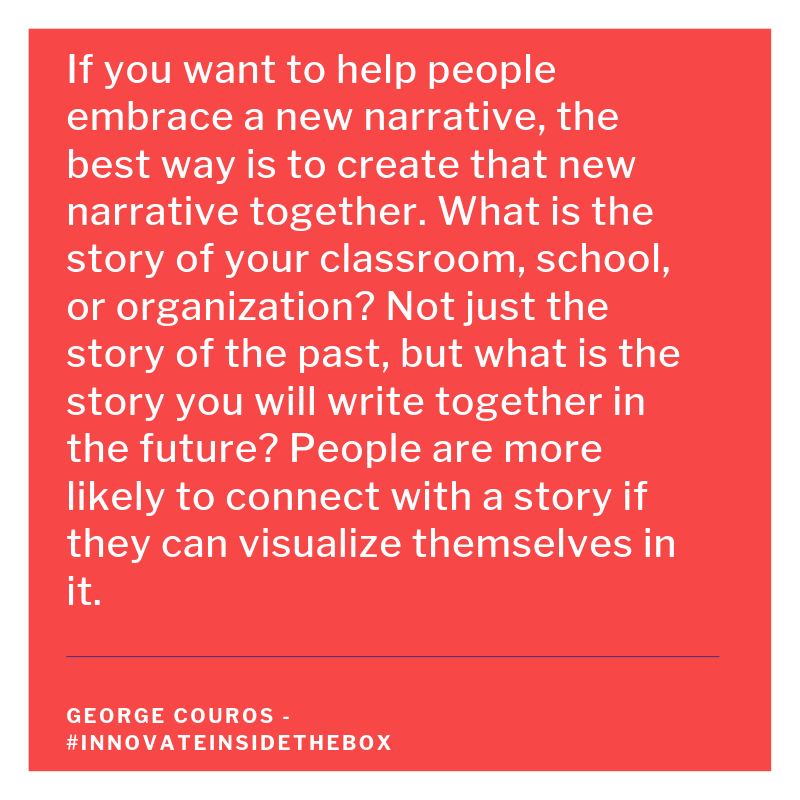I recently read a post titled, “The 10 Stories Great Leaders Need to Tell,” and they listed these ten stories that leaders need to be able to tell:
Story 1: Where We Came From (A Founding Story)
Story 2: Why We Can’t Stay Here (A Case-for-Change Story)
Story 3: Where We’re Going (A Vision Story)Story 4: How We’re Going to Get There (A Strategy Story)
Story 5: What We Believe (A Corporate-Values Story)
Story 6: Who We Serve (A Customer Story)
Story 7: What We Do for Our Customers (A Sales Story)
Story 8: How We’re Different from Our Competitors (A Marketing Story)
Story 9: Why I Lead the Way I Do (A Leadership-Philosophy Story)
Story 10: Why You Should Want to Work Here (A Recruiting Story)
You can read the entire post for a more in-depth explanation of each idea. Although these ideas are written for a business model, they can be easily adapted and valuable to education. For example, “a customer story” could be easily adapted to become a “student story,” and so on.
A couple of things about these ideas to maybe enhance them or connect them to education.
1. One of the “stories” that would be beneficial to this would be “what we do for staff” or “what we do for each other.” I am a big believer that we focus on what is doing best for kids, and that often means finding the best ways to serve students is by serving and empowering the people that work closest to them.
2. These “stories” are ones that are too often created for an organization, not necessarily by the people in the organization. I wrote the following in “Innovate Inside the Box“:
I have long believed that stories are the fuel for innovation in education. They create an emotional connection to the work that can help shift our thinking. From “Why Your Brain Loves Good Storytelling“:
Many business people have already discovered the power of storytelling in a practical sense – they have observed how compelling a well-constructed narrative can be. But recent scientific work is putting a much finer point on just how stories change our attitudes, beliefs, and behaviors.
As social creatures, we depend on others for our survival and happiness. A decade ago, my lab discovered that a neurochemical called oxytocin is a key “it’s safe to approach others” signal in the brain. Oxytocin is produced when we are trusted or shown a kindness, and it motivates cooperation with others. It does this by enhancing the sense of empathy, our ability to experience others’ emotions. Empathy is important for social creatures because it allows us to understand how others are likely to react to a situation, including those with whom we work.
But these organizational stories should not only be told as individuals, but created and shared together. The stories of our schools are not only important in what they share about the work that has already been done, but also in helping to shape the dreams we want to achieve as a group.
